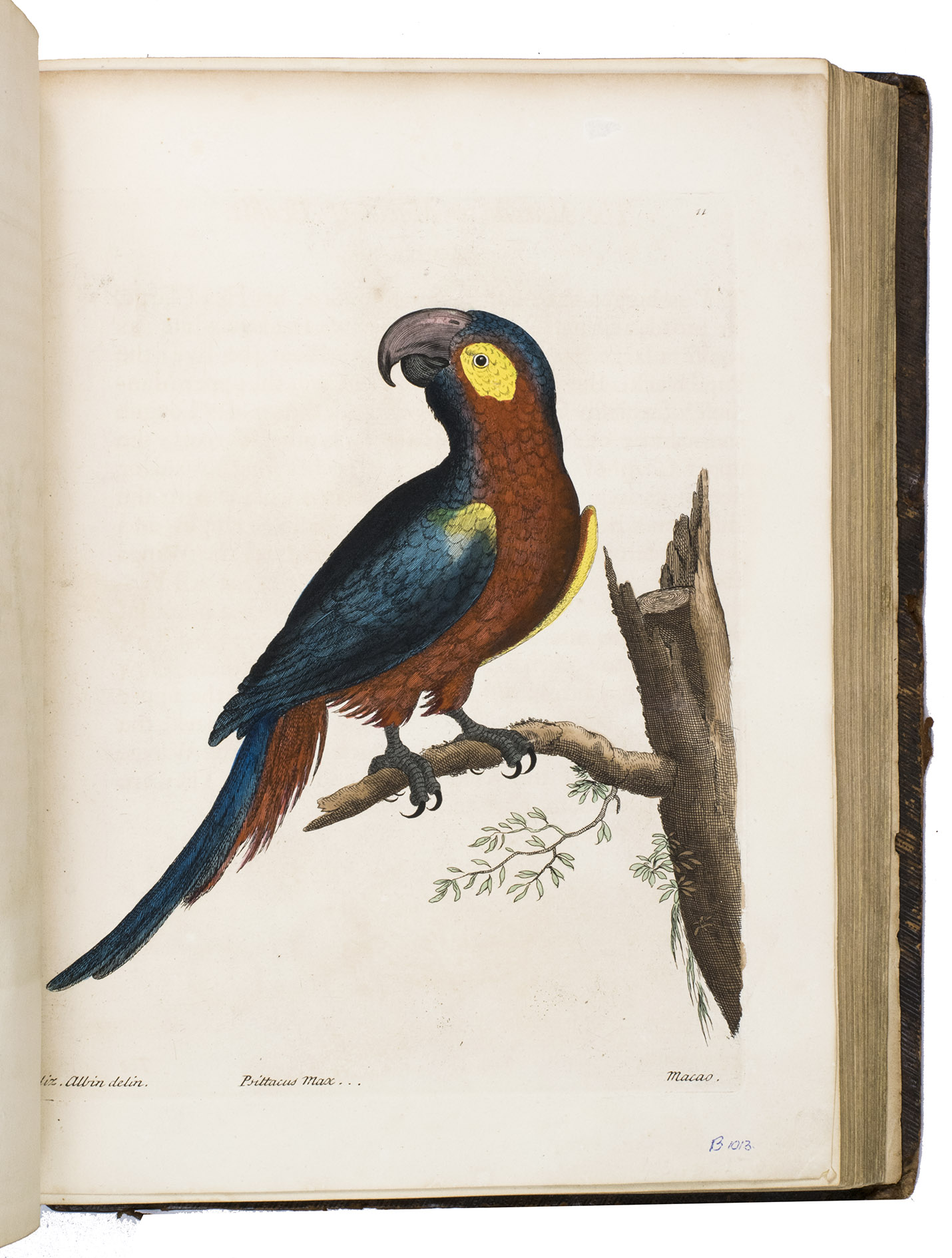STEDMAN, John Gabriel.
Narrative, of a five years' expedition, against the revolted negroes of Surinam, in Guiana, on the wild coast of South America; from the year 1772, to 1777: elucidating the history of that country, and the description of its productions, viz. quadrupedes, birds, fishes, reptiles, trees, shrubs, fruits, & roots; with an account of the Indians of Guiana, & negroes of Guiana ...
London, printed by J. Johnson and J. Edwards, 1796. 2 volumes. Large 4to (ca. 29 x 22.5 cm). With an engraved frontispiece, 2 identical engraved title-pages with a vignette, and 80 engraved plates (including 3 folding maps and a large folding view of Paramaribo), all beautifully coloured by hand, and occasionally heightened with gold. Uniform contemporary gold-tooled calf, re-backed with a later gold-tooled spine with two red title labels lettered in gold. XVIII, 407, [9]; IV, 404, [7] pp.
€ 35,000
Splendid large-paper copy in beautiful colouring of the first English edition of the most famous work on Dutch Surinam. The author, who took part in the punitive expedition sent by the Dutch Republic to subdue the revolted negro-slaves of Surinam, travelled all through the country from 1772 to 1777. Stedman (1744-1797) possessed not only a keen mind and eye for the geography, politics, and natural history of the country he travelled in, but also for its economic and social conditions. Most impressive (and very modern), however, are his vivid descriptions of the brutal treatment of the negroes, and his enlightened reflections upon the moral perversions of the slave-owners, leading him to pronounce the strongest possible indictment against slavery ever raised. Stedman's account stands out as a model of reporting. His observations gave rise to a storm of protest in liberal Europe, and his publisher did not even allow him to publish all he originally wrote down. His unexpurgated version was only recently published. The book became very popular and went through many editions and was translated into French, Dutch, and other languages. Nevertheless, the first English edition is the most richly illustrated edition, with 81 plates, engraved by William Blake, Bartolozzi, Holloway, etc. after designs by the author, and also the most beautiful, especially in its hand-coloured deluxe edition.
With the book plate of Albert Louis Cotton with his motto "Prodesse quam conspici" (to accomplish without being conspicuous) mounted on the front pastedown. Occasionally slightly browned or soiled. Otherwise in very good condition. Abbey 719; Cox II, p. 285; Howgego S168; JCB 3822; Sabin 91075; cf. Muller 3061 (ed. 1806).
Related Subjects:

































